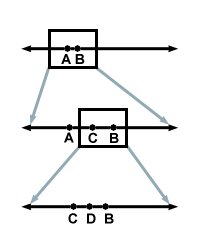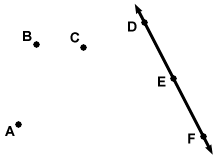Please wait while we process your payment
If you don't see it, please check your spam folder. Sometimes it can end up there.
If you don't see it, please check your spam folder. Sometimes it can end up there.
Please wait while we process your payment
Get instant, ad-free access to our grade-boosting study tools with a 7-day free trial!
Learn more



This site is protected by reCAPTCHA and the Google Privacy Policy and Terms of Service apply.
Create Account
Select Plan
Payment Info
Start 7-Day Free Trial!

Annual
2-49 accounts
$22.49/year + tax
50-99 accounts
$20.99/year + tax
Select Quantity
Price per seat
$29.99 $--.--
Subtotal
$-.--
Want 100 or more? Request a customized plan
You could save over 50%
by choosing an Annual Plan!

SAVE OVER 50%
compared to the monthly price!
| Focused-studying | ||
| PLUS Study Tools | ||
| AP® Test Prep PLUS | ||
| My PLUS Activity | ||
$22.49/month + tax
Save 25%
on 2-49 accounts
$20.99/month + tax
Save 30%
on 50-99 accounts
| Focused-studying | ||
| PLUS Study Tools | ||
| AP® Test Prep PLUS | ||
| My PLUS Activity | ||
No Fear provides access to Shakespeare for students who normally couldn’t (or wouldn’t) read his plays. It’s also a very useful tool when trying to explain Shakespeare’s wordplay!
Erika M.
I tutor high school students in a variety of subjects. Having access to the literature translations helps me to stay informed about the various assignments. Your summaries and translations are invaluable.
Kathy B.
Teaching Shakespeare to today's generation can be challenging. No Fear helps a ton with understanding the crux of the text.
Kay H.
No Fear provides access to Shakespeare for students who normally couldn’t (or wouldn’t) read his plays. It’s also a very useful tool when trying to explain Shakespeare’s wordplay!
Erika M.
I tutor high school students in a variety of subjects. Having access to the literature translations helps me to stay informed about the various assignments. Your summaries and translations are invaluable.
Kathy B.
Teaching Shakespeare to today's generation can be challenging. No Fear helps a ton with understanding the crux of the text.
Kay H.
Create Account
Select Plan
Payment Info
Start 7-Day Free Trial!
You will only be charged after the completion of the 7-day free trial.
If you cancel your account before the free trial is over, you will not be charged.
You will only be charged after the completion of the 7-day free trial. If you cancel your account before the free trial is over, you will not be charged.
Order Summary
Annual
7-day Free Trial
SparkNotes PLUS
$29.99 / year
Annual
Quantity
51
PLUS Group Discount
$29.99 $29.99 / seat
Tax
$0.00
SPARK25
-$1.25
25% Off
Total billed on Nov 7, 2024 after 7-day free trail
$29.99
Total billed
$0.00
Due Today
$0.00
Promo code
This is not a valid promo code
Card Details
By placing your order you agree to our terms of service and privacy policy.
By saving your payment information you allow SparkNotes to charge you for future payments in accordance with their terms.
Powered by stripe
Legal
Google pay.......



Please wait while we process your payment

Sorry, you must enter a valid email address
By entering an email, you agree to our privacy policy.
Please wait while we process your payment

Sorry, you must enter a valid email address
By entering an email, you agree to our privacy policy.
Please wait while we process your payment

Your PLUS subscription has expired
Please wait while we process your payment
Please wait while we process your payment

Lines
A line is the infinite set of all points arrayed in a straight formation.
It is difficult to formally define, but easy to understand. A line has no
thickness, it has only length, and can be named by any two points on that
line. For example, a line can be called line AB, or symbolized:

To form a line, take any two points, A and B, and draw a straight line through them. The line AB looks like this on paper:

A line extends in both directions without bound; this is why lines are usually depicted with arrows on each end. Its length is infinite, and between any two points on a line, there lie an infinite number of other points. Do you see why? You can choose two points on a line that seem to lie very close to each other, but if you "zoom in" on these points, you can always identify a point halfway between them. Then you can repeat the process with one of the original "close" points and the new halfway point to identify another point in between the two "close" points. This way you can find an infinite number of points between any two points on a line.

Points are called colinear if they lie in the same line. Likewise, points
are called noncolinear if they lie in different lines. Since a line is
determined by two points, any two points are always colinear. When a group of
three points is considered, however, they may be noncolinear. Colinearity is a
relative term. Points are only colinear or noncolinear when considered with
respect to other points. The figure below has a set of noncolinear points on
the left, and a set of colinear points on the right.

A line segment is the portion of a line that lies between two points on that
line, points A and B. Whereas a line has infinite length, a line segment has a
finite length. A line segment is denoted by segment AB, or the symbol


A ray is a cross between a line and a line segment. It extends without
bound in one direction, but not the other. It is determined by two points, one
being the starting point for the ray, and the other determining the direction of
the ray. A ray can be symbolized in the following way:


Please wait while we process your payment





